The Power of Veterinary Diagnostic Imaging:
What a CT Scan Can Show in Pets

Veterinary diagnostic imaging is an essential tool in modern pet healthcare, allowing veterinarians to examine the internal structures of animals without invasive procedures. Veterinarians utilize various imaging techniques, such as X-rays, ultrasounds, MRIs, and CT scans, to diagnose a range of health conditions. Each imaging modality has its own advantages and purposes.
For example, CT scans use X-ray technology to capture multiple cross-sectional images, which can then be reconstructed into a detailed 3D representation of the animal’s body. This allows for a comprehensive view of internal structures and helps identify issues that may not be visible on standard X-rays.
CT scans are particularly useful for detecting conditions such as tumors, cancers, internal injuries, infections, blockages of the bowel, and problems with blood flow. They provide veterinarians with detailed information that aids in accurate diagnosis and treatment planning. By using CT imaging, veterinarians can better understand and address their patients’ health concerns, leading to improved outcomes for pets.
Understanding CT Scans in Veterinary Diagnostic Imaging
One of the main benefits of CT scans in veterinary diagnostic imaging is their ability to provide a higher level of detail compared to traditional X-rays. Unlike X-rays, CT scans offer a three-dimensional view, allowing veterinarians to detect abnormalities like tumors, fractures, infections, or blockages that may not be easily visible on regular X-rays.
CT scans are generally non-invasive and well-tolerated by animals. However, sedation or anesthesia is often necessary to keep the patient still during the scan. Despite this, the procedure itself is painless and relatively quick. In addition to diagnosis, CT scans are also used in treatment planning. By providing a detailed view of the issue, veterinarians can better plan treatments or surgeries, enhancing their precision and effectiveness. It is essential to understand the role and capabilities of CT scans in veterinary diagnostic imaging as they significantly contribute to ensuring the health and well-being of our pets.
What Can a CT Scan Show in Pets?
 A CT scan can reveal a wealth of information about a pet’s health. Here’s what this advanced imaging technique can show:
A CT scan can reveal a wealth of information about a pet’s health. Here’s what this advanced imaging technique can show:
- Tumors and Cancer: CT scans can detect tumors in their early stages. The detailed images provide information about the exact size, location, and extent of the tumor, critical for planning the right treatment strategy.
- Bone Disorders: CT scans can provide detailed images of the skeletal structure, which can help identify bone infections and other bone-related disorders.
- Internal Injuries: A CT scan can reveal internal injuries, such as those to internal organs or soft tissues that would be missed by traditional X-rays.
- Infections and Inflammatory Conditions: CT scans can help detect infections or areas of inflammation within the body. They can show abscesses, fluid accumulation, and changes in organ size and shape that may point to an infection or inflammation.
- Blockages: A CT scan can reveal blockages in the digestive or respiratory tract, helping veterinarians decide the most appropriate treatment.
- Spinal Issues: CT scans can provide clear images of the spine and detect spinal problems such as herniated discs or spinal cord compression.
- Dental Problems: CT scans can also help detect dental problems in pets, providing a detailed view of the teeth and jaw.
- Pre-Surgical Planning: CT scans are often used for pre-surgical planning, providing a detailed map of the area to be operated on, which can increase the precision of the procedure and reduce potential risks. In summary, a CT scan is a powerful tool in veterinary diagnostic imaging, capable of revealing a wide range of health issues and guiding effective treatment planning.
Enhancing Diagnosis and Treatment Through Advanced Imaging
CT scans have become an indispensable tool in veterinary medicine, providing crucial insights into the internal anatomy and health conditions of animals. They offer detailed and non-invasive imaging of an animal’s body, aiding veterinarians in detecting, diagnosing, and planning treatments for various medical issues.
CT scans have the capability to create cross-sectional images of soft tissues, bones, and blood vessels, surpassing the capabilities of traditional X-rays. This enables a comprehensive examination of complex structures such as the skull, spine, and joints, facilitating early detection of tumors, fractures, and other abnormalities.
Additionally, CT scans are instrumental in pre-surgical planning and monitoring treatment progress. Overall, CT scans play a pivotal role in improving animal health outcomes by providing precise, high-resolution imaging.
Contact us today if you think this veterinary diagnostic imaging could help your pet.
